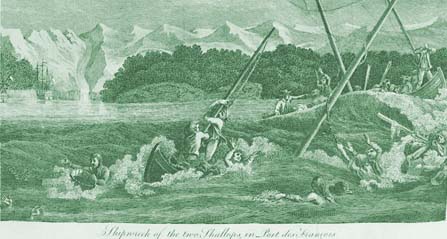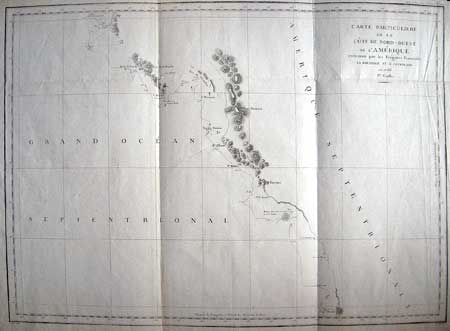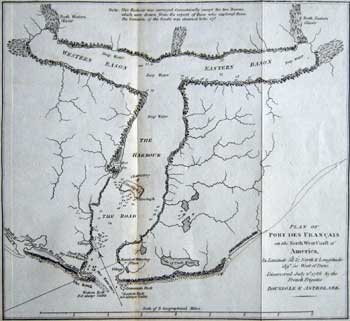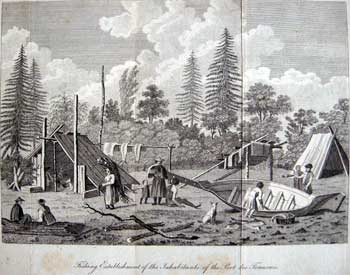
“Never in the thirty years at sea have I seen two ships so close to destruction” La Pérouse. July 1786
SECTION 6 THE TRAGIC VOYAGE OF La PÉROUSE
Having built a reputation gained during the American War of Independence, during which Jean-François de Galaup, Comte de la Pérouse (23 August 1741 – 1788?) who’s distinguished naval career positioned him as something of a nemesis of the British, following an attempt to gain control of Newfoundland, engagement at Louisbourg, another off St. Kitts. And the sacking of the H.B.C. forts in Hudson Bay. (See Section2 )
Commodore La Pérouse was commissioned by Louis XVI of France to command a round-the-world voyage of discovery in 1785. The purpose the La Pérouse voyage of exploration was to fill in some of the gaps in the charting of the world following Cook's voyages (the latter La Pérouse greatly admired) and prove that Frenchman could also be world class explorers. Thus, he was to seek a North West Passage from the Pacific, and explore the coasts of the
Pacific northwest, before proceeding to the Far East and the South Pacific Islands.
How the history of Europe might have been changed had not the application of one potential crewmember been denied, that of sixteen-year-old Corsician Lt. Napoleon Bonaparte.
On 23 June 1786 the two frigates ‘La Boussole’ and ‘L’Astrolabe’ were in sight of Mount St. Elias, and entered Port Des Français, today's Lituya Bay, Alaska, on 2 July. While making a survey of the bay, six officers and 15 crew members were lost in a storm.
Sailing south along the North American coast the well-equipped voyage of discovery, which included a 1,200 volume library, weather balloons and some of the latest scientific, instruments, explored the western Pacific during 1787. He became the first European to set foot on Maui. Sending several reports and charts of their progress back to France en-route. In October 1787 La Pérouse had also sent a Russian-speaking officer, Jean Baptiste Barthélemy, Baron de Lesseps (1766-1834) overland from Kamchatka with documents, charts, and journals. De Lesseps traveled through Siberia to St. Petersburg and then to Paris, arriving late in 1788.






